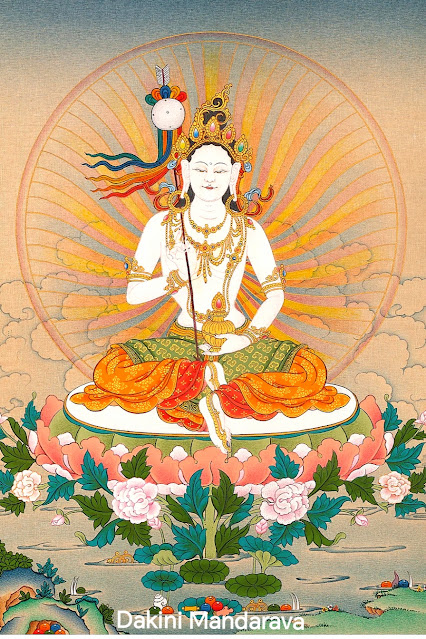Tibetan Buddhist mantras are words originally spoken by a Buddha while deep in meditation. Reciting them helps to replace the endless internal chatter of the mind with calming syllables that purify karmic imprints, bring beneficial energy, focus concentration, and offer protection and blessings.
Chanting a mantra cannot by itself liberate a person from cyclic existence. While chanting, one also must transform and focus one's thoughts.
To engage the mind in this way requires preparation—receiving teachings from a qualified master, reflecting on and contemplating those teachings, and engaging in skillful meditation practice.The most important thing in the use of a mantra is the accompanying Samadhi (state of deep meditation).
Which must be learned in the context of that specific practice, because it will be unique to that practice.
The physical posture recommended for mantra practice is roughly the same as that used for Buddhist meditation in general. This also requires personal instruction.
What is the benefit of saying mantras on auspicious occasions?
There are certain times when the benefit of mantra repetition is especially great. These include the full- and new-moon days of the month, and many other days as well. This is because of the profound relationship between our minds, our bodies, and our environment.Are there times when it is inappropriate to say mantras?
Beginners should not recite mantras during teachings because they need to focus exclusively on what's being taught. Aside from that, there is no time at which it is wrong for mantras to be recited.Any examples of stories of masters or students who had experiences while saying mantras?
All the siddhas of India, Tibet, and other lands have achieved siddhi by repeating mantras and seeing their chosen deity face-to-face as a result. All the stories are the same. As is said, The many siddhas have but one biography."
Donations for our Buddhist research and development.Do you earnestly cherish our devoted work? Assuming this is the case, we are delighted that you are finding our blog useful and valuable. Would you consider making a donation for our Buddhist research and development?
We need your help to secure the future of scholarly interaction with Buddhism. Since our very first publication of Dharma works and activities in 2008, we have been effortlessly providing free distribution of Dharma posts and articles throughout the previous 16 years.
We have exceptionally constrained support and do not receive subsidies or funding from people in general.
Please help us develop our Dharma activities that will not only benefit you but all Dharma readers on the planet. Please consider showing your support. Your generosity will certainly help us enhance our work and accomplish more for a better and brighter future.
Thank you for reading. May you find peace and great bliss. With your support, it helps to spread the Buddha’s precious teachings and turn the Dharma wheels in the world.








































